#whey protein daily
Text
#whey protein daily#daily whey protein#whey protein powder#buy daily whey protein#buy whey protein online#daily whey protein benefits#best daily protein powder
0 notes
Text
#whey protein daily#best protein#whey protein#whey protein concentrate#best protein powder#best protein brands#Fitness Play Store
0 notes
Text

Dvit Whey Protein delivers unmatched muscle-building power with 24g of pure protein in every 33g scoop. This premium formula ensures you get the most out of each serving, supporting muscle growth, recovery, and overall performance. Perfect for athletes and fitness enthusiasts, Dvit Whey Protein helps you achieve your fitness goals faster and more efficiently. Fuel your body with the best, and experience the difference with every scoop. Elevate your protein intake and power your workouts with Dvit Whey Protein.
Order Now!
+91 99112 77855
#divit nutraceuticals pvt ltd#nutraceutical#nutrition#healthy eating#protein#third party manufacturing#wheyprotein#gym body#gymlife#gymmotivation#whey powder#whey isolate protein#wheyfu#bcaa#gymnastics#daily routine#athelete#global news#industry#services#profit#solutions
0 notes
Text
Daily Whey Protein is 24g of whey protein concentrate per 33g serve which helps you to fill the protein gap within your regular diets. Our body constantly uses up protein and does not store it, and therefore it needs to be replenished every day. In other words, Daily Whey Protein gives you a protein boost to do more today and everyday. Not only that, Daily Whey Protein is fortified with vitamins and minerals helping you to get healthier doses of vitamins and minerals on an everyday basis. Now, it’s time to daily complete protect yourself and your loved ones with Daily Whey Protein!
#Daily Whey Protein#whey protein powder#buy daily whey protein#buy whey protein online#best daily protein powder
0 notes
Text
Best protein powder for daily use in India

Nutrabox is the best site to buy health supplements online. We have the Best protein powder for daily use in India . We provide a premium range of various vitamin supplements and protein powder.
0 notes
Photo

Follow @TheEasyShake for the latest tips on #health + #wellness using the #EasyShake System for your #delicious #NoCleanUp #Whey #ProteinShake & #Breakfast #Shake with an added #daily #multivitamin! #EasyShake #Protein #Healthy #Breakfast #BreakfastIdeas #BreakfastShake #Fitness #Nutrition #Smoothie #Smoothies #Better #HealthySmoothies #HealthyFood #HealthyRecipes #HealthyLifestyle (at Redondo Beach, California) https://www.instagram.com/p/CnkCBGJJfNM/?igshid=NGJjMDIxMWI=
#health#wellness#easyshake#delicious#nocleanup#whey#proteinshake#breakfast#shake#daily#multivitamin#protein#healthy#breakfastideas#breakfastshake#fitness#nutrition#smoothie#smoothies#better#healthysmoothies#healthyfood#healthyrecipes#healthylifestyle
1 note
·
View note
Text
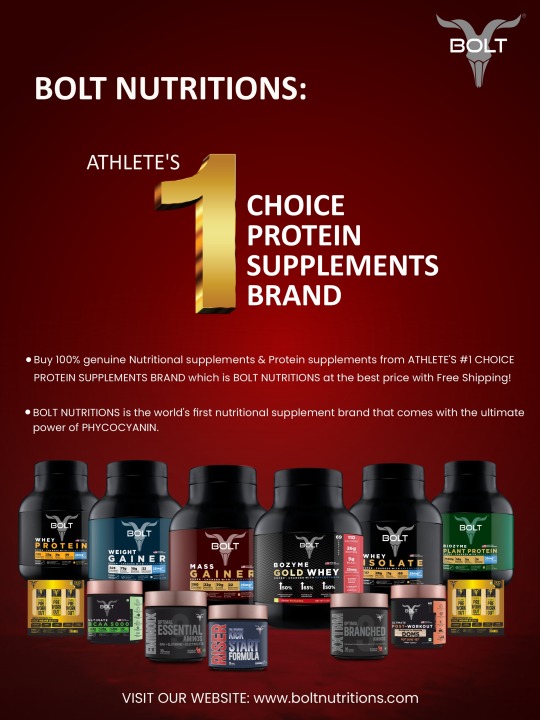
BOLT NUTRITIONS: ATHLETE'S #1 CHOICE PROTEIN SUPPLEMENTS BRAND
Buy 100% genuine Nutritional supplements & Protein supplements from ATHLETE'S #1 CHOICE PROTEIN SUPPLEMENTS BRAND which is BOLT NUTRITIONS at the best price with Free Shipping!
BOLT NUTRITIONS is the world's first nutritional supplement brand that comes with the ultimate power of PHYCOCYANIN.
#protein supplements#Nutritional supplements#buy protein supplements#buy Nutritional supplements#world no 1 nutrition brand#world no 1 nutrition company in india#world no 1 nutrition company#world number 1 nutrition company#world number one nutrition company#best protein powder company#best protein powder for daily use in india#Biozyme Plant Protein#Bolt Whey Isolate Protein#Bolt Whey Protein#Bozyme Gold Whey#EminoIX Optimal Essential Aminos#INSANE Pre Workout Effervescent Tablets#MASS GAINER#Premium Gym Shaker Bottle#Riser A Kick Start Formula Pre Workout Supplement#ULTIMATE BCAA 5000#ULTIMATE POST WORKOUT#WEIGHT GAINER#XXTRM Optimal Branched Aminos#buy whey protein#best protein supplement in india
0 notes
Text
Top 10 Whey Protein Brands In 2023
Whey protein powder is a basic yet extremely effective protein supplement. This supplement is the best in the business and has won several honors over the years, making it the best in the business. According to customer feedback, this whey protein powder is one of the finest tastings on the market. To get the best possible outcomes and performance, this product contains only the best components in scientifically confirmed proportions.
Here are the top 10 protein whey protein brands in 2023;
1. Naked Whey
2. NOW Sports Unflavored Grass-Fed Whey Protein
3. Raw Organic Whey
4. Garden of Life Sports Grass-Fed Organic Whey Protein
Read More: Top 10 Whey Protein Brands In 2023 - Daily Healthcare Facts
#Whey Protein Brands#Daily Healthcare Facts#Health#HeathTech#Fitness#Exercise#Blogs#News#Articles#Nutrition#Diet#Pharma#Vaccine#Motivation#Selflove#Lifegoals#Research#exercise
0 notes
Text
if you're thinking of going to the gym to build a broader, muscular physique, here is a long post of random tips from a cis gym girlie!!!
disclaimer: these tips are from the experience of a cis femme queer woman who has been going to the gym for the past 5 years, and hyperfixates on weight training. i am in no way a certified personal trainer or dietician, and i do not have the knowledge to train with chronic pain or disabilities. i personally deal with some chronic pain and impinged joints that i have tips for, but that is not the purpose of this post! these tips are also more applicable for able-bodied cis women, and non-binary/genderfluid/bigender/gnc/trans folks with naturally lower levels of testosterone, who are beginners in weight training (0-12 months of going to the gym)
table of content:
know your goals
eat more protein
lift weights and progressively overload to build muscle
compound exercises is your bestie. isolation and isometric exercises are good company to keep
your diet determines 90% of your physique or wtv they say
you belong in the gym and don't let anyone tell you otherwise
it's common to have body dysmorphia, even at a level where you're jacked af. feel it, understand it, and be curious about where it is coming from
extra stuff
***
1. know your goals!
for the purpose of this post we are going to assume the goal is to gain serious muscle!
this means your workout will focus on either strength or mass
strength: heavy weight x low reps, means being able to carry the heaviest weight possible, at lower repetitions. think 60kg bench press at 4 reps
this builds immense strength, leaner size, and is the way strongmen/women and powerlifters train
that also means denser, stronger muscles, which will take a longer time to regress
mass: mid weights x mid reps, means carrying a challenging enough weight to go at higher repetitions. think 30kg bench press at 12 reps
this builds muscle mass and good strength, and is the way bodybuilders train
this is more time consuming than the first option, but goes hard on that beefy aesthetic
to build dense strong muscles, go for 3 sets, 3-5 reps per exercise
to build bigger muscles, go for 4-5 sets, 8-15 reps per exercise
please understand that muscles are heavier than fat. if you start weight training and notice your weight increase, but your physique stays the same/gets leaner, you're likely gaining a lot of muscle weight, which is a very good thing!
if you want a capped delts, fat biceps and wing lats, focus on upper body and core workouts
if you wanna get that peach booty, tree trunk thighs, and sculpted calves, focus on lower body and core workouts
if you want an 'X' taper, go for a full body workout
you can split your workouts by body parts (upper, core, back, legs), or by push and pull, to begin with
2. eat more protein!
depending on where you live and your available food options, you're likely not getting enough daily protein intake
when you lift weights, you tear your muscles (in a good way) so it can rebuild stronger for the next time you stress them out. protein helps you rebuild those 'damaged' muscles
it also keeps you satiated for longer - protein takes a longer time to digest
if you're vegan/vegetarian, opt for protein rich food like tofu, tempeh, soy products, legumes, chickpeas, etc.
if you struggle to eat enough protein, get protein powders to reach that daily intake
whey protein contains dairy. pea protein for vegans and lactose intolerant girlies
you can take protein powder with many types of food/liquids. i personally eat proats (mixing protein powder into cooked rolled oats) for breakfast.
aim for 0.8g - 1g per pound or 1.6g - 2.2g per kilo i.e. if you weigh 50kgs, aim for 110g daily protein intake for muscle growth
you don't need to eat your protein at like 30 mins before or after a session etc. as long as you have a consistent daily intake you're good
but! don't overload with protein in one sitting. space out your protein consumption throughout the day otherwise your body can't effectively absorb it all and it'll just go to waste
3. lift weights and progressively overload to build muscle
body weight exercises are good to start off, but if you want to build muscle, you need to start adding resistance to your training
that means periodically increasing the amount of weights you lift, to increase the challenge your muscle takes
being able to perform movements with heavier weights than before is also a good indicator that you're getting stronger!
if you're squatting body weight this week, try with 2kg dumbbells next week. then 5kg the next, 7kg the next, 10kg the next, and so on.
at a certain point it'll take longer to increase your weights. think taking 4 weeks to go from 100kg squats to 110kg
some bodies aren't able to tolerate higher weights (injury, chronic pain, genetic), so instead, add variations - instead of increasing to 20 push ups, try 10 push ups with your feet elevated
4. compound exercises is your bestie. isolation and isometric exercises are good company to keep
compound exercises work more than just one muscle group/one group of joints - these require multiple parts of your body to move in sync, to perform it correctly
compound movements are also functional movements. think being able to safely pick up a heavy box off the floor, storing your luggage in the overhead compartment, carrying your groceries in one go, carrying your wife to bed
deadlifts, squats, bench press, pull ups, overhead press, rows, push ups, lunges, and farmers carry are good basic compound movements to start with
once you're familiar with those, you can try variations like romanian deadlifts, sumo squats, chest press, chin ups, cable rows, push up plus, split squats to make it more challenging
isolation movements, such as bicep curls, knee extensions, crunches, etc. works mainly one muscle group/requires movement from one group of joints
for example, squats (compound) require you to move your hip joints and knee joints. knee extension (isolation) moves only knee joints. squats mainly work your glutes, quads, and core, while knee extensions mainly target your quads.
isolation movements are good for strengthening a specific muscle group, especially after an injury or specific weakness (isolation calf exercises to strengthen ankles), or for aesthetic purposes (fat biceps)
isometric exercises require you to contract your muscles without much movement. these are good for endurance and bracing.
planking is an isometric exercise. it's a very good exercise to stabilise your core, which is very good for injury prevention, and protects your spine from overextending
a strong, stable core is crucial to performing compound exercises and many daily movements safely
honestly muscle building is basically injury prevention if you do it right. you also get a strong physique, as a treat
keep your movements slow and controlled - focus on activating the muscle group that the exercise is intended for
quality movements = better muscle activation = efficient muscle growth
rushing through an exercise could result in injury, or compensating using the wrong muscle group or joints (ie. using your knees instead of your quads and glutes for squats)
5. your diet determines 90% of your physique or wtv they say
your muscles need protein to grow, and your body needs fuel to move. body fuel: carbs, fat, and protein
carbs are not your enemy!! fat is not your enemy!! not in excess!!
no food is bad or junk food. some foods are more nutritionally dense than others but at the end of the day, eating something diet culture deems 'unhealthy' is better than starving yourself
you can eat anything you want - the key is moderation
if you love sugary drinks, instead of drinking 5 cans of soda a day, drink only one (moderation)
if you love bread (like i do), have something else with that bread like tuna, peanut butter, lettuce, an egg, etc. (variety of nutrients)
if you love chips, have one serving a day, instead of the whole bag in one sitting
if you want to have visible muscles (read: abs) you need to go on a calorie deficit (cutting) - that means eating 200-500 less calories than your daily calorie need. you will likely loose strength and muscle mass
if you want to have strength and mass, and don't mind a bit of body fat, you can go for calorie surplus (bulking) - that means eating 200 - 500 more calories than your daily need
you can gain muscle and lose fat the same time
use this calculator to determine your calorie intake needs for cutting, maintaining, and bulking
you can also use the app 'calorie counter by fatsecret' (ios / android) to track your calories (but not too strictly! don't go down that slippery slope of obsessing over your every macro/micronutrient intake please!!!)
please remember that everyone's fat distribution is different - some people might not store much fat in their abdominal area, some might store more in their underarm area, etc. your genetics will determine where your body fat is distributed, which will affect your physique
emotional eating happens. cravings happen. binge eating happens. forgetting to eat happens. not feeling like eating happens. it's important not to associate guilt when it does - it's okay if you deviate from your usual eating routine. you can try again tomorrow
i've had a decent relationship with food my whole life, so i can't talk much about eating disorders or recovering from it, although you can watch leanbeefpatty's take on how to stop emotional eating, and her eating mentality (mostly intuitive eating) - she overcame ED in her youth
your body doesn't change much because you ate more/less than your target calorie intake for the day. changes in the body is gradual when it comes to body composition (fat distribution, muscle growth)
staying consistent is good. allowing yourself to deviate is also good. many of us aren't built to stick to something 100% all the time
most days can be 95%, some days 68%, some even at 23%. allow yourself those less than ideal days, so that you can go back to 95% most days. the key is going for as many 95% days possible, not a handful of 100%
6. you belong in the gym and don't let anyone tell you otherwise
you paid for the gym membership, just like everyone else. you have every right to be there, and use any and every equipment the gym provides
so what if you're starting with light weights? your starting weight is not your final weight
that means you also belong in the free weight/dumbbell section. take up space (respectfully) and don't be apologetic about it
don't be afraid to use the machines! they usually have instructions on the side. start off with the lowest weight, and go through the motion to familiarise yourself with it
it's okay if you don't know what you're doing at first - the gym is the place for you to figure it out
'what if they are looking at me' most people at the gym are busy focusing on themselves. they likely don't notice you most of the time
i would usually avoid eye contact, and look at either the floor, the ceiling, the wall, or the distance, so i don't notice if anyone is looking at me
if the gym is still intimidating, go with a friend! bring your headphones! drown out the world!
honestly i treat going to the gym as one large body double. having other people working out together helps keep me accountable to my own workouts. especially if my gym crush(es) is/are around
7. it's common to have body dysmorphia, even at a level where you're jacked af. feel it, understand it, and be curious about where it is coming from
i don't have any tips on managing body dysmorphia bc it is so personal and unique to each person
all i can talk about is what personally worked for me
which was focusing on getting stronger, instead of looking leaner
because when you get stronger, your body WILL change. the physique will come
but the physique that comes might not be what you'd expect - many times you've not seen how your body looks like when you get stronger
you might only see examples of strong bodies from media (who usually have really good genetics in the muscle building area), or other people at the gym
no two bodies are the exact same. if you dream of having xxx's physique, that isn't going to happen
but what you can dream of is having your strongest physique, which is unique to you, belongs to you, and will happen to you
remember, your ideal body type is the one you have now
you can set goals and have role models, but please please please do not make your role models your goal
i still struggle with bd, but it is much much better than before. i actually like looking at my body a large large majority of the time
for the femme girlies, if you want to get a muscular physique but are afraid of people calling you 'masc' or that you 'look like a man' fuck that noise. lift heavier, get jacked, become the muscle mommy your inner child would be proud of
8. extra stuff
if you're a cis woman or someone with naturally lower levels of testosterone, you won't get very, very muscular
you can get really strong (and with the right training, diet, and genetics, stronger than most cis men), but please don't compare your strength and size to someone who has higher levels of testosterone, naturally or through HRT or steroids
testosterone WILL help a person get very muscular and very strong, with lower levels of body fat. if you have lower levels of T, muscle size is limited, and body fat distribution is different. you likely store fat much easier too
please don't compare yourself with other folks with naturally lower levels of testosterone either - each person has different genetics, and some people are naturally stronger/bulkier than others, or have been lifting longer/more often
please don't be shy - look at the mirror when you work out and CHECK YOUR FORM. If your knees are buckling during your squats, you need to push them outwards or use lighter weights before you break your legs
if you have preexisting pain or are recovering from an injury, please get a personal trainer to help you create a custom training programme suited for your condition
if you experience acute pain while working out, stop what you're doing, ice it, see a physical therapist, and get that fixed. don't soldier on with the pain and make it worse. trust me!!
if you're just starting out, and have been experiencing common sedentary pains like lower back pain, take it easy, stretch, and get a personal trainer to build you a custom programme. im serious
always, ALWAYS warm up before a work out, and stretch after.
do dynamic warm ups before, and static stretching after
mind muscle connection is very important in weight training
focus on how your muscle is contracting and stretching, how your joints move, how everything comes together to help you balance and move something heavy around
i don't experience it personally, but i know many queer folks who are very disconnected with their bodies
i do not have any tips for that unfortunately
getting enough sleep is very important in building muscle - muscles recover and grow when you're sleeping/resting, not in the gym, not in the kitchen
again, the gym breaks down your muscles, the kitchen gives them the nutrients to rebuild, and the bedroom kick starts the actual process of recovery
remember that building muscle will take time. it doesn't happen overnight, nor does it happen in a week, a month, maybe even a year if you're inconsistent
it might take years to get to where you want to be. it's going to be a difficult journey, but it'll be worth it i think
show up, stay consistent, stay strong, and stay focused
but don't forget to rest and be kind to yourself - you don't need to push if you really can't do it
skipping one workout every once in a while, is a small blip in a lifetime of sessions.
a bad workout session doesn't determine the quality of all your workouts
truly once you start and see results, you will be amazed at what your body can achieve
a free resource that helped me kick start my fitness journey, and knowledge on weight training throughout the years, is nerdfitness. most recently leanbeefpatty for helpful tips, motivation, and entertainment
hope this helps someone in some way!
#muscular women#fitness#fitness tips#gym#buff women#muscular queer women#muscular enbies#buff enbies#gym girlies#strength training#weight training#physique#blows a kiss to the transmen not on hrt#this is for you too#eating disorder#food#diet#workouts#exercise#i tried to be as inclusive as i can re: gender/body/disabilities and i can still be wrong in the language i use but please be kind abt it!!
15 notes
·
View notes
Text
Can I build muscle and lose fat at the same time?
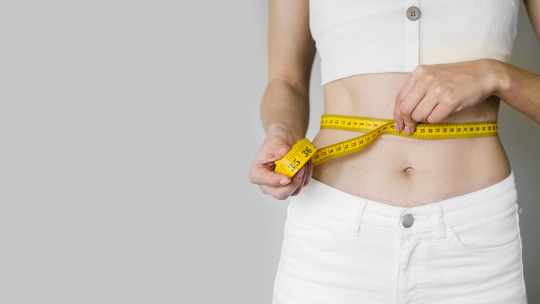
Yes, it is possible to build muscle and lose fat simultaneously, though it can be challenging and typically requires a well-structured approach. This process is often referred to as “recomping” (short for recomposition). Here are some key strategies to achieve this:
1. Nutrition
Caloric Balance: Aim for a slight caloric deficit to lose fat while providing enough nutrients to support muscle growth. This typically means consuming slightly fewer calories than your body needs to maintain its current weight.
Protein Intake: Ensure a high protein intake (1.6 to 2.2 grams per kilogram of body weight) to support muscle repair and growth.
Macronutrient Balance: Balance your diet with a good mix of carbohydrates and fats to provide energy and support overall health.
2. Strength Training
Progressive Overload: Continuously challenge your muscles by increasing the weight, reps, or intensity of your workouts over time.
Compound Movements: Focus on compound exercises (squats, deadlifts, bench presses) that work multiple muscle groups simultaneously.
Consistency: Maintain a regular workout schedule, typically 3–5 times per week, to consistently stimulate muscle growth.
3. Cardio
Moderation: Incorporate moderate cardio to support fat loss without compromising muscle gains. High-Intensity Interval Training (HIIT) can be particularly effective.
Timing: Consider doing cardio on non-lifting days or after strength training sessions to prioritize muscle preservation.
4. Recovery
Sleep: Ensure adequate sleep (7–9 hours per night) to allow your body to recover and grow.
Rest Days: Incorporate rest days to prevent overtraining and reduce the risk of injury.
5. Consistency and Patience
Long-Term Commitment: Body recomposition is a gradual process that requires consistent effort over time. Patience and persistence are crucial.
Monitor Progress: Track your progress with measurements, photos, and performance in the gym rather than just focusing on the scale.
6. Individual Factors
Starting Point: Beginners or individuals returning after a long break often see more dramatic changes in body composition.
Genetics: Genetic factors can influence how easily you gain muscle or lose fat.
7. Nutrient Timing
Pre-Workout Nutrition: Consume a meal or snack rich in protein and carbohydrates about 1–2 hours before your workout to fuel performance.
Post-Workout Nutrition: Have a post-workout meal or shake with protein and carbs within 30–60 minutes after your workout to aid recovery and muscle growth.
8. Hydration
Stay Hydrated: Adequate hydration is essential for overall health, performance, and recovery. Aim to drink plenty of water throughout the day, particularly before, during, and after workouts.
9. Supplementation
Protein Supplements: Whey or plant-based protein powders can help you meet your daily protein requirements.
Creatine: Creatine monohydrate is a well-researched supplement that can enhance strength, power, and muscle mass.
Branched-Chain Amino Acids (BCAAs): These can help reduce muscle soreness and promote muscle protein synthesis, particularly when training in a fasted state.
10. Mind-Muscle Connection
Focus on Form: Pay attention to proper form and technique to maximize muscle engagement and prevent injury.
Contraction: Emphasize the contraction of the target muscles during each exercise to improve muscle activation.
11. Variation in Training
Periodization: Incorporate different phases in your training program, such as strength, hypertrophy, and endurance phases, to continually challenge your muscles and prevent plateaus.
Exercise Variety: Regularly change your exercises, rep ranges, and workout routines to keep your muscles guessing and promote continuous adaptation.
12. Tracking and Adjustment
Regular Assessments: Keep track of your body composition, strength levels, and overall progress. Adjust your diet and training plan based on these assessments to ensure continued progress.
Listen to Your Body: Be mindful of signs of overtraining or injury. Adjust your training intensity and volume as needed to prevent burnout and maintain long-term progress.
13. Metabolic Rate and Muscle Mass
Muscle Increases Metabolism: Building muscle increases your resting metabolic rate (RMR), helping you burn more calories even at rest, which aids in fat loss.
14. Hormonal Balance
Manage Stress: High-stress levels can lead to elevated cortisol, which can negatively impact muscle growth and fat loss. Incorporate stress management techniques such as meditation, yoga, or deep breathing exercises.
Hormonal Health: Ensure adequate intake of essential fats and micronutrients to support hormonal health, which is crucial for muscle growth and fat loss.
15. Support System
Accountability: Having a workout partner, or coach, or joining a fitness community can provide motivation, accountability, and support.
Education: Continuously educate yourself about nutrition, training, and recovery to make informed decisions and optimize your body recomposition efforts.
By paying attention to these important factors, you can further enhance your ability to build muscle and lose fat simultaneously. Remember, consistency, patience, and a holistic approach are key to achieving long-term success in body recomposition.
#weightloss#health#weight loss#fatloss#lose weight#healthy#diet to lose weight#fat loss#losing weight#fatlosstips#how to lose weigth fast#weigthloss#lose stomach weight#weight loss tips#weight loss motivation#weight loss success stori#weightwatchers#i wanna lose weight#i need to lose so much weight#gaining weight on purpose#i need to lose this weight#diet#weight loss journey#how to lose weight#muscles#bodybuilder#muscular#flexing
12 notes
·
View notes
Text
NRoute's Daily Whey Protein Supplement is available in various delicious flavors and is easy to digest, making it an excellent addition to your daily routine. With regular use, you may notice improved muscle tone, increased strength, and better overall performance during your workouts. Don't let a lack of protein hold you back from achieving your fitness goals. Boost your journey with NRoute's Daily Whey Protein Supplement and see the difference for yourself.
0 notes
Note
hey, do you have any advice for women trying to build muscle? I'm specifically looking to build some muscle in my chest.
Ok, so I'm going to be completely honest with you and tell you that I am less than one year into seriously weight training. I am by no means an expert nor am I a health professional. With that in mind, I'll tell you what I know. :) You are free to message me as well if there's anything more you would like to know. It's impossible to cover everything in one post but I will do my best to be helpful.
There is quite frankly SO MUCH to learn about growing muscle, but it is doable. If you have a curious and open mind and love to research then those are amazing assets to have because there are always ways to refine your technique and improve diet and rest. These might seem pretty basic so maybe you already know a lot of this (I don't know your experience level so I'm gonna talk as if speaking to a total newbie) but I'll cover what I think is important.
Eat lots of protein. Shoot for 0.7-0.8g of protein per pound of lean body mass. If you are already pretty lean you can use your normal weight but if you are obese then you should try to figure out how much of your weight is fat and calculate your lean body mass from there. Protein powders such as whey protein and pea protein are very helpful and can be more affordable than other sources. Some people will say 1g of protein per pound of body weight but honestly it may be a bit overkill. Try to eat your protein not all in one sitting otherwise your body will convert a bunch of it into energy instead of muscle. Have some of your daily protein with each meal instead, you can break it into snacks as well.
Train hard, REST HARDER. If you don't rest your body will not be able to create more muscle. Get at least 8 hours nightly, more is probably better. After working out, do not exercise the same muscles you trained for a minimum of 48 hours. Use this time to exercise different muscle groups, or rest.
Technique/form >>> lifting heavy. Form is important for safety and to also ensure you are stimulating the targeted muscles instead of inadvertently using other parts of the body to get the work done. Control the eccentric (lengthening the muscle) phase of an exercise by performing it slowly for 1-3 seconds. Concentric (shortening/contracting the muscle) phases can be done explosively and quickly but you must always be in control of the weight and not use momentum to move the weight around. Rest 1-3 minutes (some people say minimum 2 minutes, you can also rest longer if needed) between sets to make both your muscles AND nervous system enough time to recover.
STOP THE WORKOUT IF YOU ARE EXPERIENCING PAIN/NAUSEA/LIGHTHEADEDNESS/FEELING FAINT/ANYTHING ELSE YOU'RE CONCERNED ABOUT. Some discomfort is okay, but as soon as you feel pain in your muscles or joints or anything else that is serious you have to stop or you may seriously harm yourself. It is important to be in contact with your primary healthcare provider and adapt your workouts to your own specific health needs.
BE PATIENT. Women can expect to gain about one pound of muscle per month through weight training. You should not weight train solely for muscle gain, but also for the health benefits in improved cardiovascular health, improved mental health, increased energy and strength, better sleeping habits, and good diet (lots of proteins and veggies).
Record the types of exercises you do, how many sets and reps you did, and how much weight you used for those sets and reps. Weight training is built upon the concept of progressive overload, which means increasing training volume (weights * sets * reps) over time, by increasing one (or more) of those variables (so upping the weight, sets, and/or reps). In order to utilize progressive overload effectively, you MUST record your progress so that you are not guessing how much you lifted the last session and end up potentially stunting your progress. When you're putting in this much time and effort you do not want to wing it and waste a workout session.
--
Now, you want to build chest muscle. I personally work more on leg and arm muscles but I do work out my entire body. I'm saying this to convey that I am not the most experienced. However, this is what I know.
You should try to get around 10 sets of chest exercises weekly to stimulate muscle growth (standard across the board for muscular hypertrophy in any muscle group). You can do more (I do bc I have a lot of free time) but don't burn yourself out, because consistency is arguably the most important factor when it comes to muscle growth. You have to commit for several months and then years. 10 sets of 5-8 reps (repetitions) weekly should cause muscular hypertrophy (muscle growth). You can do all ten sets in one session, or break it down into two sessions where you do five sets each. It all depends on your personal schedule. Start light in order to get accustomed to whichever chest exercises you choose first, and then lift the heaviest you can without breaking form/cheating the rep.
It is completely possible to work out your chest muscles without doing bench presses. HOWEVER, in the event that you do bench presses, here are some safety tips. NEVER use clips to secure weights on either side of the barbell when you are performing bench presses without a spotter, otherwise you may become stuck when failing a bench press and will be unable to free yourself because the weights are unable to slide off onto the floor, lightening the bar. Bench pressing without a QUALIFIED spotter (not some gym rando you don't know) is not ideal, however it can be hard to get a spotter so that's why I'm giving you this tip in case you decide to solo bench press anyway. Personally I almost never bench press and opt to use the machines which are much safer to use solo.
Personally I use pec/chest fly machines and chest press machines to work out my chest, along with shoulder presses to stimulate part of the upper chest (but of course those are mostly for my shoulders). On youtube there are a bunch of demonstration videos (including by women) so you can look at those if you need more guidance than the instructional stickers on the sides of exercise machines. Remember to get good stretches of the chest muscles under tension on chest fly machines (cable machines are good too) bc that stimulates the muscles a bunch and results in good growth. Incline chest presses are good too.
You can use pushups to stimulate muscle growth in the chest, HOWEVER it is not possible to utilize progressive overload using calisthenics (exercises with (little to) no external weights/objects) unless you like... idfk wear a backpack with weight on it or something. So you can use this to grow chest muscle initially, however your growth would end up plateauing after a certain point.
If you have any more questions just let me know, again I'm not a pro but I'm glad to help in any way I can. There is so much more I could have added but I hope this post has helped you at least even a little bit.
Edit: This ask refused to publish a few times because of how damn long my post was lmao
14 notes
·
View notes
Text
Karlie Kloss' lifestyle is shifting, one habit at a time.
For years, the model and entrepreneur, 31, avoided lifting weights at the gym so she wouldn't bulk up. But today, she's found resistance training to be "an effective, important way to stay strong and lean and build muscle."
"I didn't think it was good for my body," she exclusively tells Women's Health in an interview about her partnership with Thorne. "There was always this myth that somebody put in our heads somewhere that like women aren't supposed to strength train, and that's absolutely false."
The same goes for her fueling her body: When she living out of a suitcase, Karlie felt like she "only ate snacks all the time," adding that she "didn't know where my next meal was gonna be." Now, she's become disciplined about her eating, noting that prioritizing three nutritious, filling meals a day has been a "game-changer."
The Kode With Klossy founder has become especially focused on her health after welcoming two kids (sons Levi, 3, and Elijah, 1, with husband Joshua Kushner) over the past three years.
"I really recognize how much a woman's body goes through—not only through pregnancy, but also just getting older," she says. "I really am more aware of wanting to be strong and invest in things that are just going to make me feel better."
Ahead, here's everything to know about Karlie Kloss' diet and wellness routine, from her favorite meals to share with her children to her go-to sweet treat.
Breakfast is the most important meal of her day.
Karlie is trying to instill healthy habits with her sons from a young age, so she makes sure to start her day off right.
"We always sit down for breakfast when I'm home," she says. "To just sit down and have proper meal time—that is something that's also part of my wellness."
The family's favorite breakfasts include oatmeal with berries and pancakes made from banana, oats, almond flour, and chia seeds. If she's running out the door, Karlie will grab a chocolate shake made with Thorne whey protein.
Karlie typically eats the same lunches and dinners.
The Bedford Media CEO adds that she usually eats the same lunches and dinners day-to-day. "I'm so boring," she says. "I could eat the exact same thing every single day."
Since Karlie doesn't eat meat, she's a big fan of salmon—either grilled or with a ginger-soy marinade. She also loves to munch on eggs or Greek yogurt to get her proper dose of daily protein.
"Protein has been a big, big focus for me as I get older and want to make sure I'm maintaining my strength and conditioning," she says.
She loves a sweet treat.
When it comes to indulgences, Karlie says she has a "total sweet tooth." Any kind of cookie—but especially chocolate chip—are her favorites.
"I dangerously live very close to a Levain Bakery in New York, and that's my go-to," she says.
She stays 'consistent' with her wellness routine.
In addition to fueling her body with lots of protein, Karlie prioritizes getting proper nutrients—even if it doesn't come from her diet. She's a big fan of Thorne's Memoractiv supplement to combat "mom brain fog," plus the brand's Basic B Complex to promote cellular energy.
"My kids keep me busy—my three-year-old gives me a run for my money, and my one-year-old is now just about to walk, so I'm chasing after them all day long," she says. "These [supplements] gives me peace of mind that I'll have the nutrients to make me feel good, both physically and mentally."
In addition to her daily regimen, Karlie likes to take a minute for herself, whether that's doing a quick meditation in the taxi on the way to work, doing a dance class at the New York City studio Forward__Space, or popping in her headphones for a brief run.
"That makes all the difference in my day," she says.
3 notes
·
View notes
Text
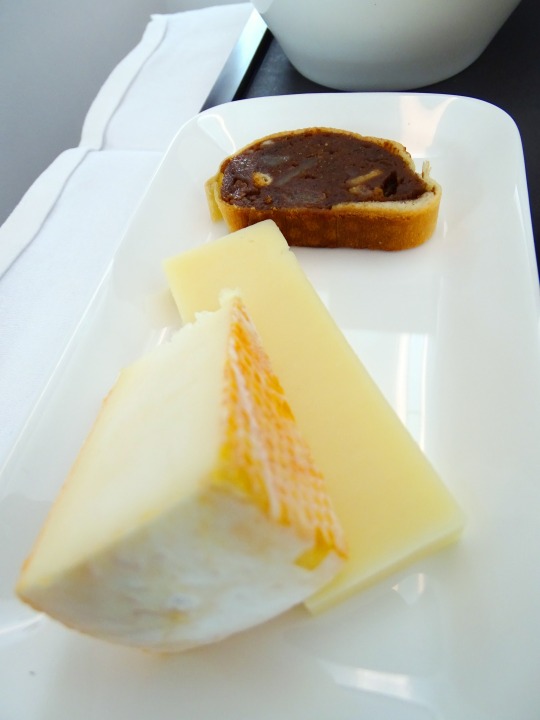


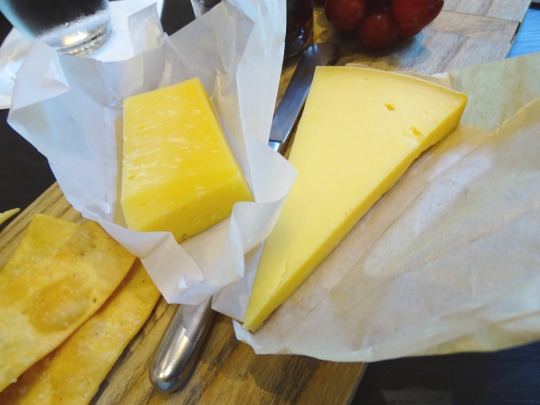
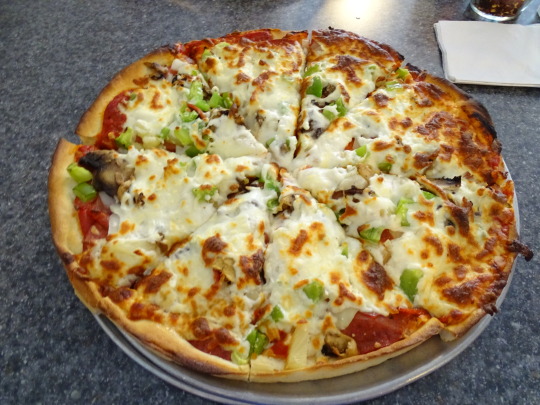


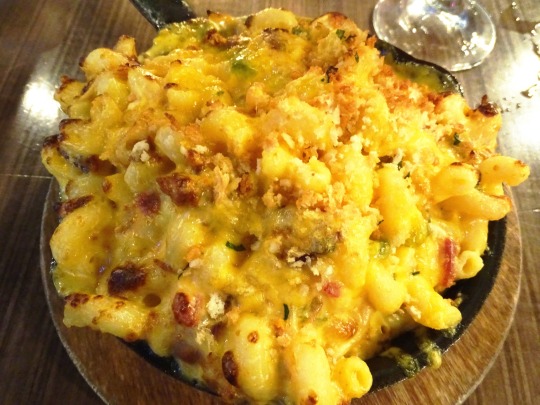
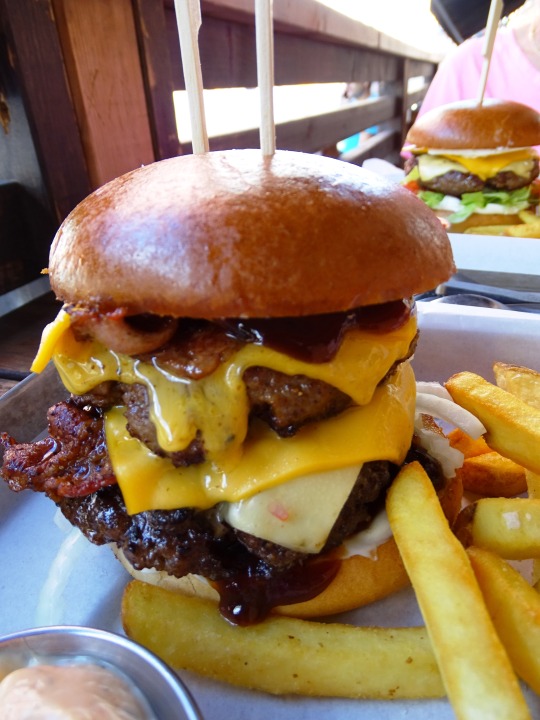


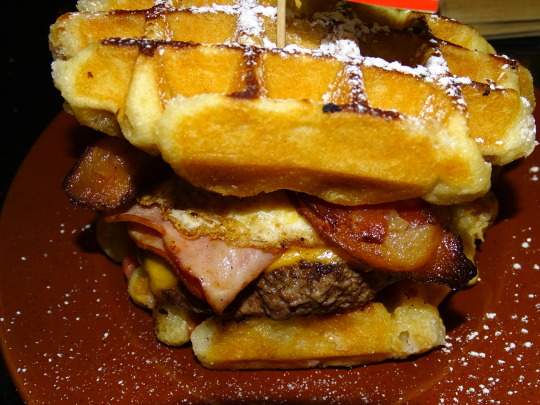
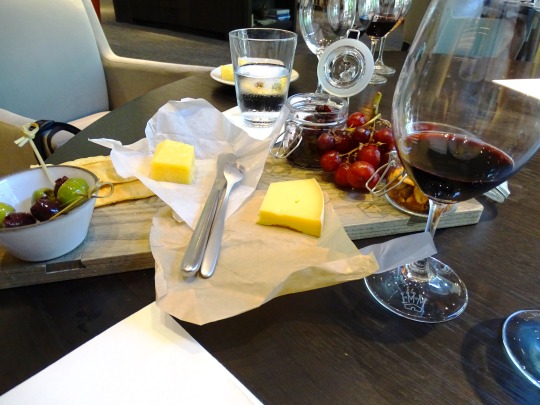




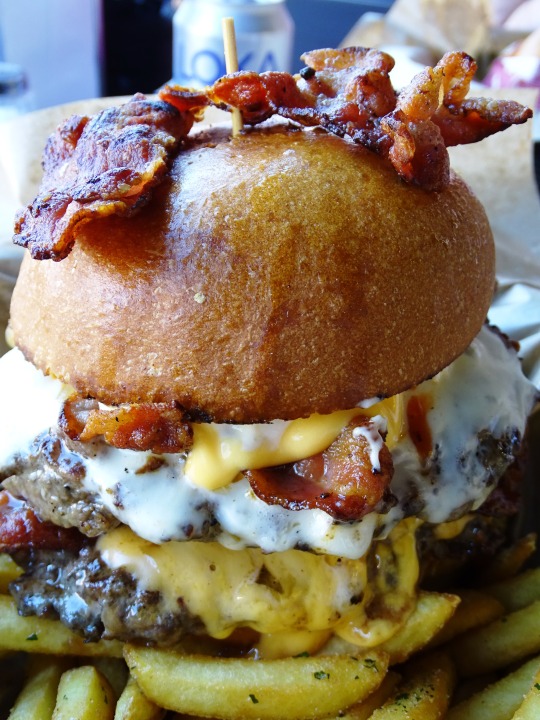

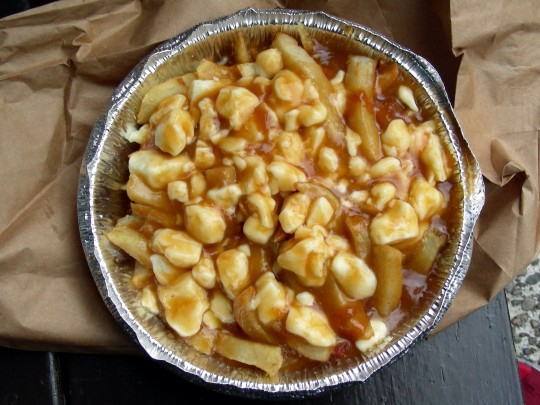





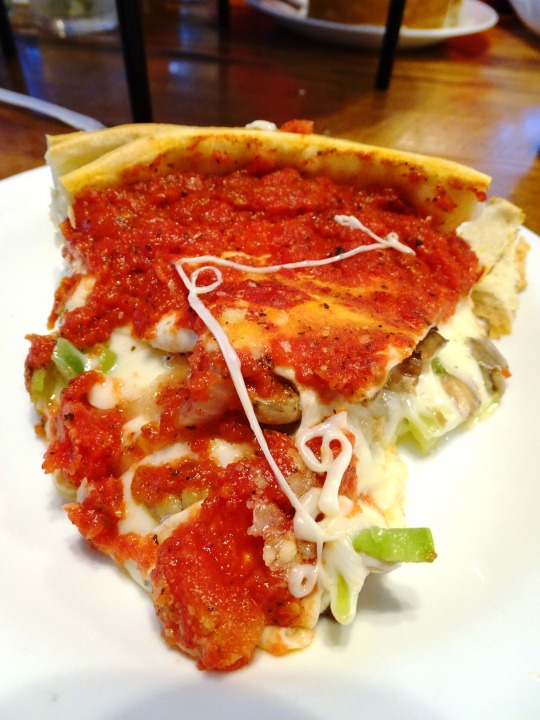

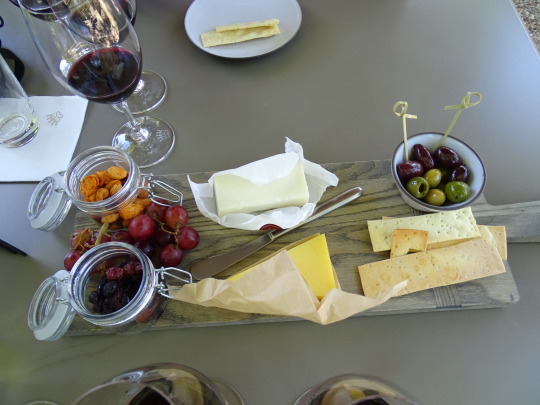


National Cheese Lovers Day
Chances are you don't just like cheese, you love it. If that's the case, you are in for a treat—today is National Cheese Lovers Day! Cheese is made from curds—the bits of protein that form when milk sours—from the milk of cows, goats, sheep, and buffalo. Spices, seasonings, mold, temperature, and age help determine its flavor and texture, and these in turn help determine how it is classified. Common classifications and some examples include fresh cheese like ricotta, soft cheese like feta, semi-soft cheese like Fontina, semi-hard cheese like Gouda, hard cheese like Cheddar, double or triple crème cheese like Brillat-Savarin, blue cheese like Gorgonzola, washed rind cheese like Limburger, and bloomy rind cheese like brie. The name "cheese" comes from the Latin word caseus, which stems from the Proto-Indo-European root kwat, which means "to ferment" or "to become sour."
Cheese dates back to before recorded times. Legend has it that it was first made by accident: an Arabian merchant who was keeping milk in an old sheep stomach found that it had separated into curds and whey. This reaction was caused by heat and from rennet, an enzyme found in the stomach. This was perhaps around 8000 BCE, around the time that sheep were first domesticated.
Cheese became a way to preserve milk before the invention of refrigeration. The curds were strained, and salt was added, which helped it keep longer. Still, cheese had a short shelf life and was made fresh and eaten daily. According to archaeological findings, some of the first intentional cheese making was being done around 5,500 BCE, in the area that is now Poland. Beyond Europe, there is evidence of early cheesemaking being done in the Middle East and Central Asia.
Romans made many different kinds of cheese and making it became a culinary art form. They spread their methods north into Europe, where they were adapted by monks. In Northern Europe, the climate was cooler, so less salt was needed for preservation. This cheese tended to be creamier and milder. Aged, ripened, and blue cheeses also came about in these cooler climates. During the Middle Ages, European cheesemakers originated Parmesan, Gouda, Camembert, and Cheddar.
Mass production of cheese started in 1815 when the first commercial cheese factory opened in Switzerland. Processed cheese, which consists of cheese combined with milk, emulsifiers, stabilizers, flavoring, and coloring, made its debut about a century later. It gained in popularity during the World War II era, becoming more popular than natural cheese. In more recent years, artisan cheesemaking has been making a resurgence.
Cheese is easy to love on its own, but it also goes well with soufflés, soups, and pastas, and can be paired with many foods. It many times is also paired with white or red wine. Being that there are so many kinds of cheese, there is plenty of love to spread around. On National Cheese Lovers Day, we eat and enjoy as much cheese as possible.
How to Observe National Cheese Lovers Day
Celebrate National Cheese Lovers Day by eating cheese! Put it on crackers or a sandwich, make yourself a pizza with an extra heaping of it, or eat some nachos. Make your own cheese or try a cheese out of your comfort zone. Buy hard, soft, and blue cheeses, as well as things to pair with them such as grapes, olives, or tomatoes. Don't forget to buy some wine, too. If you are feeling creative, you could design a cheese board. Let your cheese sit out for a half an hour at room temperature to give it a better texture and flavor. Then, enjoy it with your friends, perhaps at a cheese party at your home. To burn off some of those cheese calories, you could get yourself moving and visit a cheese factory or plan a trip to a cheese festival.
Source
#Beef Bacon Cheese Dog#Three Cheese and Spinach Dip#Factory Pizza#Lozärner Birrewegge#Double Bacon Cheese Burger#food#restaurant#original photography#travel#Sweden#Switzerland#National Cheese Lover’s Day#20 January#vacation#NationalCheeseLoversDay#Sumo Burger#Cheese Fondue#homemade#Mac 'n' Cheese#fries#Canada#origin#Original 5 Napkin Burger#Truffle Fries with parmesan reggiano#Cheese Board#Chicago Special Stuffed Pizza#National Cheese Lovers Day#homemade Cheese Fondue#Schweiz#Swiss cheese is the best
7 notes
·
View notes
Text
Best protein powder for daily use in India

Nutrabox provides a premium range of various vitamin supplements and the Best protein powder for daily use in India. We are the Best online store for proteins, Vitamins, and power liquids.
0 notes
Text


The Shogun Series Whey/Plant Stack, an all-natural and Soy-free bundle that is designed to support athletic nutrition and performance. 100% Whey Protein, Advanced Plant Protein, Creatine Monohydrate, Cordyceps Mushrooms, and L-Glutamine Powder are the foundation for a body ready for the battle of daily life.
Buy the stack and you'll not only get one free, but you'll also receive free shipping automatically at checkout!
Be the Shogun of your own Dynasty🏯
https://www.higherrealms.store/collections/shogun-series
#higher realms wellness#shogun#shogun series#protein#athletic nutrition#whey isolate protein#plant based#healthy eating#nutrition#healthy food#healthy#creatine#performance#athletic performance
2 notes
·
View notes